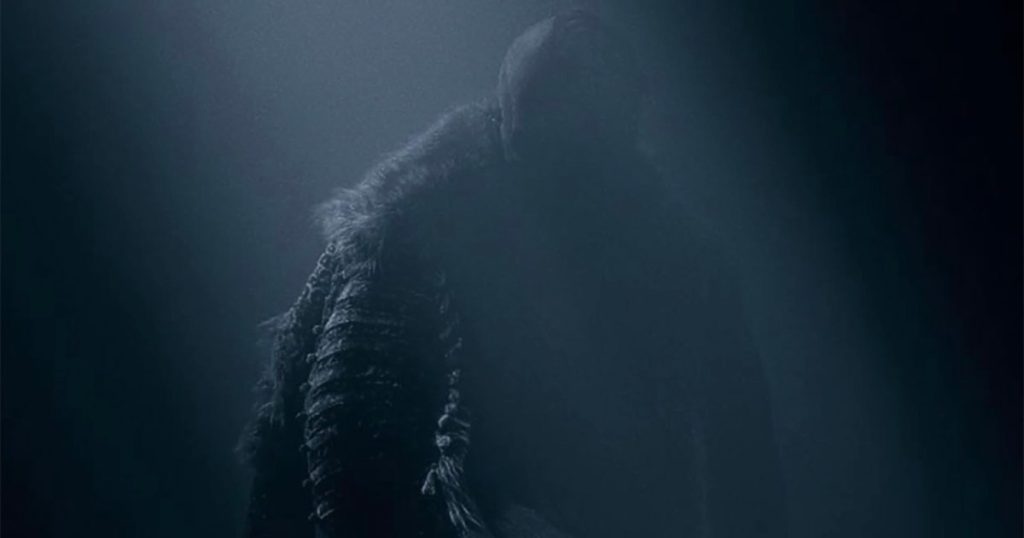Bill Skarsgård’s portrayal of the decrepit Count Orlok in the recent remake of Nosferatu has become a talking point, not only for his chilling performance but also for a rather unexpected prosthetic: a prosthetic penis. While Skarsgård is no stranger to heavy prosthetics, having transformed for roles in films like It and The Crow, this particular addition was a novel experience, creating a memorable, and somewhat awkward, moment on set. The prosthetic became a central element in a scene shared with co-star Nicholas Hoult, who played Thomas Hutter, the unfortunate victim of Orlok’s bloodlust. As the scene unfolded, the prosthetic repeatedly made contact with Hoult’s leg, creating a level of discomfort that director Robert Eggers found amusing enough to commemorate with a unique wrap gift: the framed prosthetic itself. This unusual memento, which Hoult had to get reframed after it arrived damaged, certainly sparked a curious conversation with the frame shop owner, further solidifying the prosthetic’s bizarre place in the film’s history.
The inclusion of the prosthetic penis was not a gratuitous decision but rather a practical one, driven by the demands of a specific scene. David White, the head of prosthetic makeup effects, explained that the full-body shot of Orlok rising from his sarcophagus necessitated a complete and anatomically correct representation of the character. Therefore, the prosthetic was deemed essential for maintaining the visual integrity of the scene. While the presence of the prosthetic may have been unexpected, it was ultimately a carefully considered decision that served a specific purpose within the film’s narrative and visual language. The decision also highlights the level of detail and commitment to realism that the creative team employed throughout the production.
While the prosthetic penis undoubtedly generated some awkwardness on set, particularly for Hoult, Skarsgård approached the situation with the utmost professionalism. White described the actor as being entirely unfazed by the addition, remaining committed to his performance and embodying the character of Orlok with unwavering dedication. This professional demeanor extended beyond the prosthetic itself, encompassing Skarsgård’s entire approach to the role. He reportedly remained in character even between takes, staying quiet and lurking in the shadows, much like the nocturnal vampire he portrayed. This dedication to embodying the character contributed to the overall chilling effect of his performance.
Beyond the unexpected prosthetic, Skarsgård’s transformation into Count Orlok involved other intricate details, including a meticulously crafted mustache. Initially designed to be longer and of a different color, the final version of the mustache was a collaborative effort between Skarsgård and the makeup team. The actor’s input led to a shorter, more refined mustache, subtly thinned in the center to better reveal his teeth and enhance the character’s menacing appearance. The subtle addition of silver coloring further emphasized the character’s age and otherworldly nature, demonstrating the meticulous attention to detail that went into creating Orlok’s distinct and unsettling visage. This collaboration between actor and makeup team highlights the collaborative nature of filmmaking and the importance of incorporating the actor’s vision into the character’s physical representation.
The anecdotes from the set reveal a fascinating contrast between the unsettling nature of Skarsgård’s character and the lighter moments that occurred behind the scenes. While Skarsgård maintained his character’s shadowy demeanor on set, his partial costume, sometimes paired with casual joggers, offered a humorous juxtaposition. These glimpses behind the curtain offer a reminder that even the most intense and macabre productions are still collaborative work environments where moments of levity can arise. These anecdotes also humanize the filmmaking process, showing that even within the context of creating a horror film, there is room for laughter and shared experiences.
The prosthetic penis in Nosferatu serves as a curious footnote in the film’s production history. While it undeniably created some unusual moments on set, it ultimately underscores the dedication of the creative team to achieving a specific visual effect. Skarsgård’s professionalism in handling the situation, coupled with his overall commitment to embodying the character of Orlok, demonstrates the actor’s dedication to his craft. The meticulous attention to detail, evidenced by the collaborative process of designing the mustache, further highlights the level of care taken in bringing the character to life. The combination of meticulous preparation, unexpected challenges, and moments of humor behind the scenes ultimately contributed to the creation of a memorable and chilling cinematic experience.










